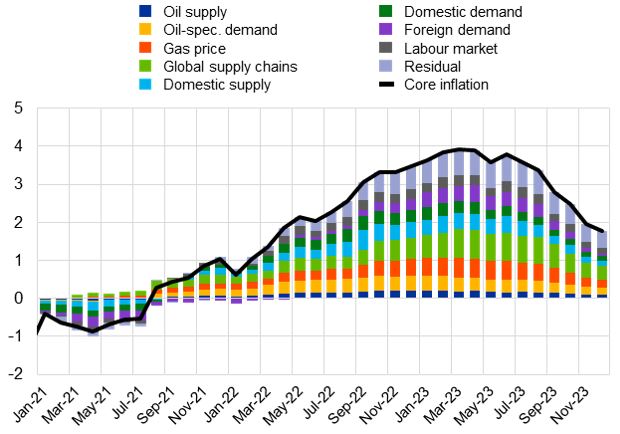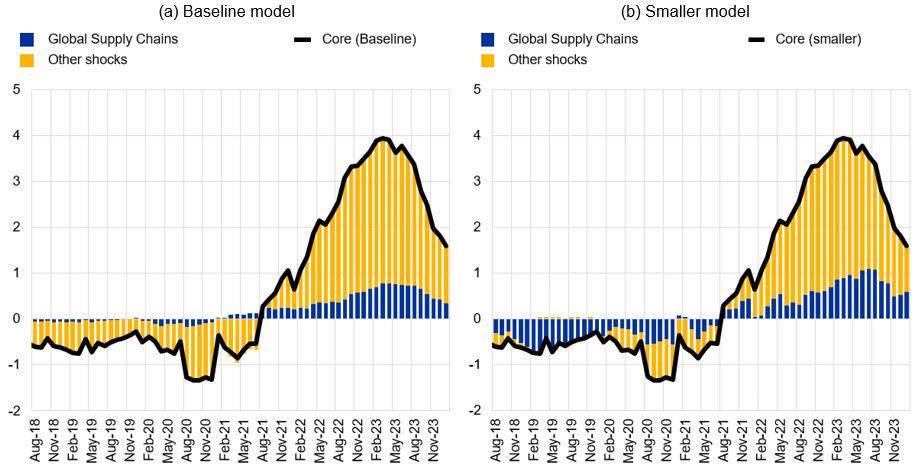References
Bańbura, M., Bobeica, E., Bodnár, K., Fagandini, B., Healy, P. and Paredes, J. (2023), “Underlying inflation measures: an analytical guide for the euro area”, Economic Bulletin, Issue 5, ECB.
Bańbura, M., Bobeica, E. and Martínez Hernández, C. (2023), “What drives core inflation? The role of supply shocks”, Working Paper Series, No 2875, ECB.
Benigno, G., di Giovanni, J., Groen, J.J.J. and Noble, A.I. (2022), “The GSCPI: A new barometer of global supply chain pressures”, Staff Reports, No 1017, Federal Reserve Bank of New York, May.
Carrière-Swallow, Y., Deb, P., Furceri, D., Jiménez, D., and Ostry, J. D. (2023), “Shipping costs and inflation”, Journal of International Money and Finance, Vol.130, p.102771, February.
Korobilis, D. (2022), “A new algorithm for structural restrictions in Bayesian vector autoregressions”, European Economic Review, Vol.148, p.104241, September.
Lane, P.R. (2023), “Underlying inflation”, lecture at Trinity College Dublin, 6 March.
Liu, Z. and Nguyen, T. L. (2023), “Global Supply Chain Pressures and US Inflation”, FRBSF Economic Letter, Federal Reserve Bank of San Francisco, No 2023-14, pp.1-6, June.
Rubaszek, M., Szafranek, K. and Uddin, G. S. (2021), “The dynamics and elasticities on the U.S. natural gas market. A Bayesian Structural VAR analysis”, Energy Economics, Vol. 103, p.105526, November.
De Santis, R. (2024), “Supply chain disruption and energy supply shocks: impact on euro area output and prices”, Working Paper Series, No 2884, ECB.







